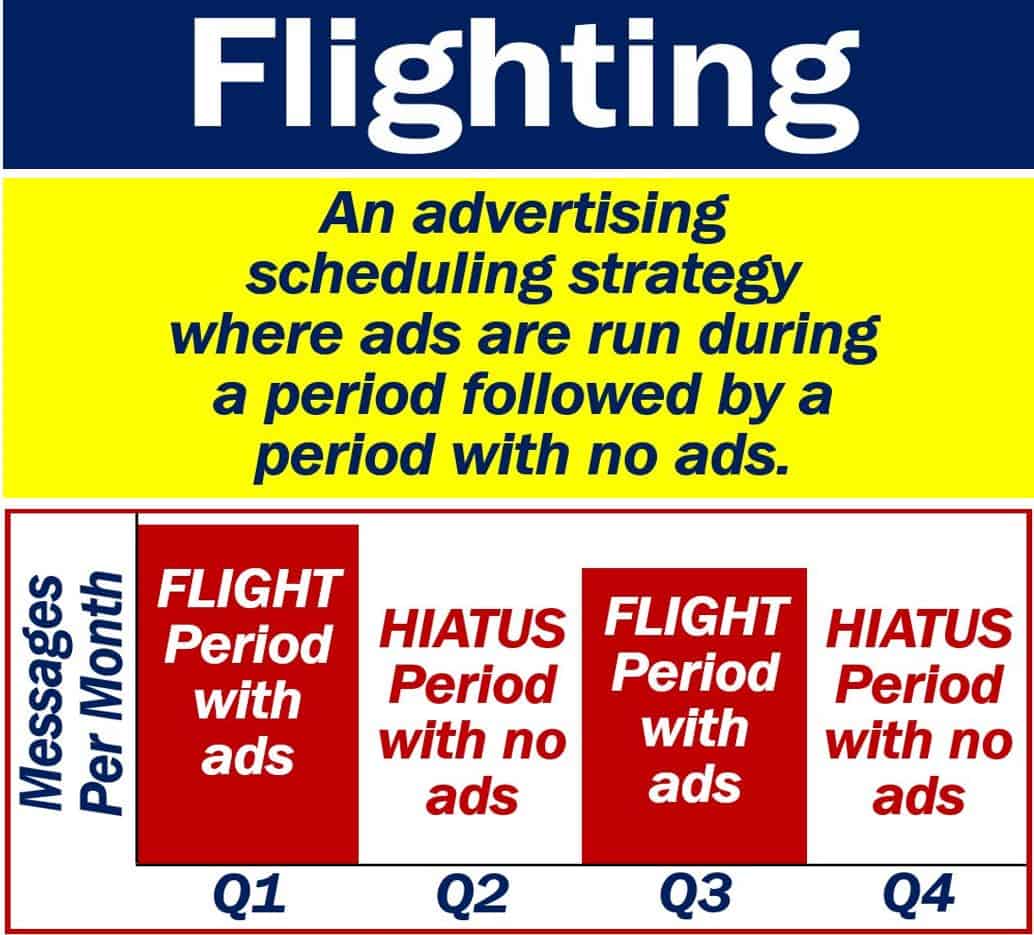Flighting is an advertising strategy in which the seller runs adverts for a period and then no ads at all for another period. The words ‘ads‘ and ‘adverts‘ have the same meaning, i.e., advertisements. In a flighting strategy, the advertiser only places adverts during optimal periods. During periods that are not optimal, the seller does not place any ads.
Flighting strategy capitalizes on consumer trends and seasonality, focusing ad spend during peak shopping or interest periods for more effective marketing.
We refer to the periods with and without adverts as the flight and hiatus respectively.
This flight-plus-hiatus strategy goes against some theories which suggest that advertising should be continuous. Recent theory, in fact, strongly insists that having a hiatus is bad for sales.

Flighting – examples
For some products, flighting makes sense. Promoting Valentine cards all year round, for example, would make no sense. The advertiser should focus on the weeks leading up to Valentine’s Day, i.e., February 14th.
Advertisers for swimming trunks, bikinis, and bathing suits use a flighting strategy.
Swimwear ads should appear during some weeks leading up to the summer. There should also be adverts during some of the summer.
However, there should be a hiatus regarding swimwear ads during the winter. This is especially the case in countries far from the equator.
Flighting – for limited budgets
Advertising is not cheap. Large companies, which can get big discounts on advertising deals, can afford huge campaigns.
However, small businesses need to allocate their scarce dollars carefully. They must analyze target consumer behavior and preferences. Then, they can determine when to place their ads for maximum effect.
Flighting, therefore, makes sense for small companies with limited resources.
Digital platforms have enhanced the flighting strategy, allowing advertisers to dynamically adjust their ad placements in real-time based on consumer engagement and online traffic patterns.
Advertising is the business of attracting consumers’ attention and encouraging them to buy goods. Advertising also tries to get consumers to purchase services.
Semi-flighting
Some sellers do not switch off the advertising completely. However, they do have a flight period and a much lower period.
Some sellers, during their semi-hiatus, may use cheaper media such as newspaper or radio.
With a semi-hiatus, the themes and messages of the advertising campaign continue reaching customers. At the same time, the seller is also saving money.
Pulsing
Pulsing is an advertising strategy in which there are strong and weak periods. In other words, in one period there are lots of ads, and in another period fewer of them.
The periods with more ads coincide with times of the year that demand is higher.
Deodorant consumption occurs all year round. However, people consume more deodorant during the summer months.
Therefore, a pulsing campaign for deodorants would have lots of ads during the summer and fewer in the winter.
Marketers have three ‘scheduling’ options: 1. Continuous. 2. Flighting. 3. Pulsing.
